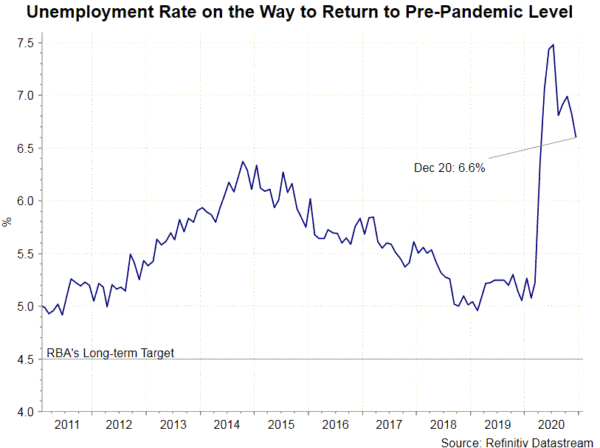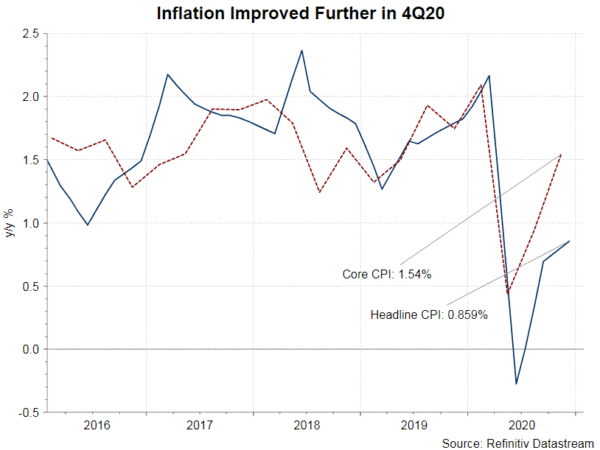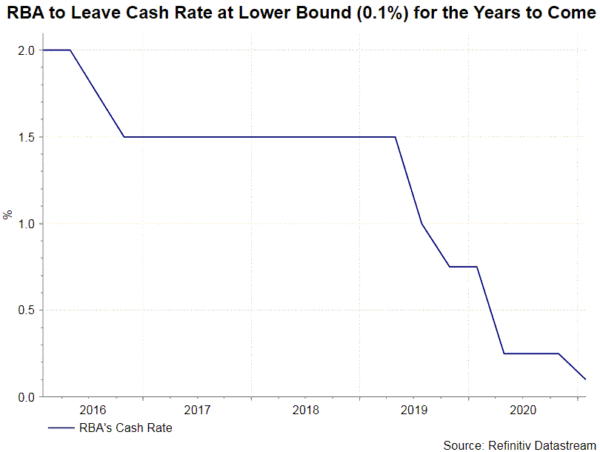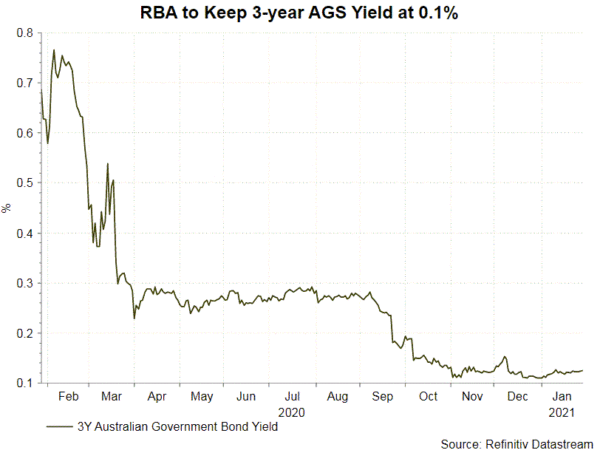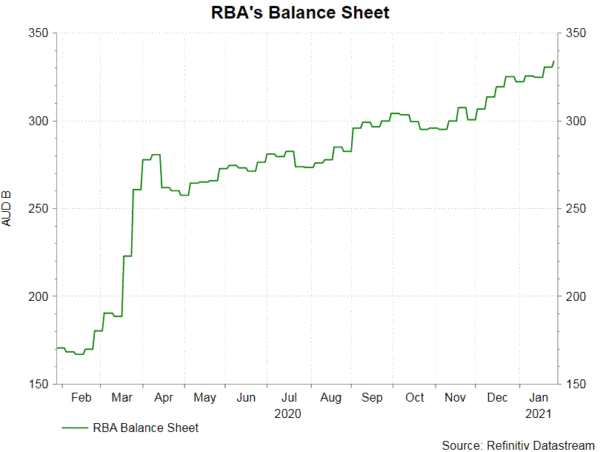The RBA will have its first meeting this year on Tuesday, followed by publication of the statement of monetary policy on Thursday. We expect all policy measures to stay unchanged this month. Policymakers could revise GDP forecast higher and the unemployment rate lower, given the better-than- expected economic data released recently. Yet, they would remain cautious about the economic outlook and indicate that the pace of economic recovery would be uneven, and highly dependent of vaccination and the pandemic developments.
The economy continued to improve in Australia. The unemployment rate dropped to 6.6% in December, compared with consensus of 6.7% and November’s 6.8%. The participation rate also edged +0.1 ppt higher to 66.2%, signaling better confidence over the job market. The number of payrolls gained +50K last month, down from +90K in November. Headline CPI picked up +0.2 ppt to +0.9% y/y in 4Q20, beating consensus of +0.7%. RBA’s preferred inflation gauges averaged at +1.3% y/y up slightly from +1.25% in the third quarter. This also exceeded consensus of +1.2%. Core CPI jumped to +1.5% y/y, from +1% in the third quarter. Yet, inflation remains below RBA’s +2% target.
On the monetary policy, it is highly likely that the central bank would leave the cash rate at record low of 0.1% The target for the yield on the 3-year government bond yield and the interest rate on new drawings under the Term Funding Facility will also stay at 0.1%. On QE, RBA will also keep the size of asset purchase at AUD100B worth of government bonds of maturities of around 5 to 10 years until May.
Going forward, we expect RBA to maintain an accommodative monetary policy for the years ahead with tapering and rate hike only rolled out very gradually. We expect policymakers to extend asset purchases worth of AUD100B by 6 months, as the current program ends in May. Yield curve control (YCC) target 3-year yield at 0.1% will also continue throughout the year. There could be review in 2022.




